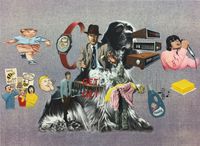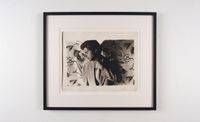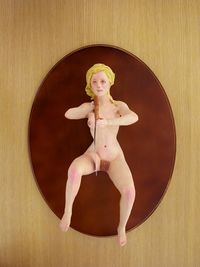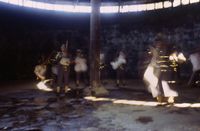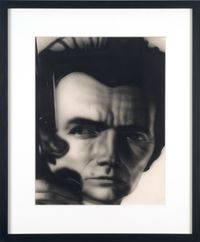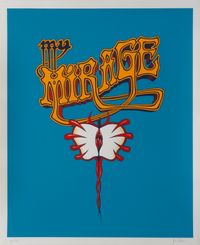In his multidisciplinary works, Jim Shaw draws from eclectic sources including popular culture, current and historical events, and fragments from his life. Equally significant to his practice is the underside of American culture and history: consumerism, conspiracy theories, cults, and homespun religions, images of which Shaw weaves together into his humorous, irreverent works.
Read MoreShaw holds a BFA from the University of Michigan, Ann Arbor (1974) and an MFA from the California Institute of the Arts, Valencia (1978). Among the generation of visionary artists that graduated from the latter in the 1970s, Shaw was particularly close with Mike Kelley, with whom he studied in Michigan and moved together to Southern California. Upon completing his studies, Shaw worked in the film industry before gaining recognition in the mid-1980s.
Shaw's paintings, photographs, sculptures, film, collages, posters, comic strips, and installations often reference one another, engaged in a large narrative that unfolds over an extended period of time.
The investigation of American culture and history is emblematic of Shaw's work. In the artist's first major project, titled My Mirage (1986–91), a series of 170 images follows the story of Billy, a white middle-class male who navigates life in America of the 1960s and 1970s. Sex and drugs are among the few things Billy encounters, as is rock n' roll, before he falls to cult membership and rises again with the aid of organised religion—a saga that Shaw drew from both his own and his friends' upbringing.
In the painting King Cotton (2015), Shaw's insights are more historical and socio-political. It describes a never-ending act, in which a green mechanical elf spins gold from the cotton giant, alluding to the repetition of history and questioning the morality of pursuit for power and wealth.
In 2002, the Swiss Institute in New York presented The Goodman Image File and Study, which purported to show the works of the O-ist painter, Adam O. Goodman. Oism, according to the exhibition, was an American religion whose origins in the 1840s coincided with the spread of Mormonism. Both O-ism and Goodman were, on the contrary, Shaw's creations, conceived as a satire of religious fanaticism. Since its inception in the late 1990s, Oism has interrogated the rituals and practices necessary to maintain a religion through paintings, sculptural works, and films.
Shaw's work is diverse in media as well as in style. 'Dream Drawings' (1992–1999) series, one of his iconic works, features pencil on paper drawings that feature surreal and yet naturalistic scenes in the style of comic stripes. In a 2015 interview with Ocula, Shaw explained that the uncanny drawings began with his own dreams and their 'occult way of telling ... in a satirical way or a symbolic way with things that are formally similar but not exactly the same'.
Also operating in the comic book style is the 'Blake/Boring' series, ongoing since 2011, which combines the surreal, fantasy world of the 18th century poet and artist William Blake and the superhero comic style of Wayne Boring from the 1950s.
Since the 1980s, Shaw has been exhibiting his works internationally in both solo and group presentations.
Selected solo exhibitions include Before and AfterMath, Metro Pictures, New York (2021); Hope Against Hope, Simon Lee Gallery, London (2020); Strange Beautiful, Praz-Delavallade, Paris (2019); The Wig Museum, Marciano Art Foundation, Los Angeles (2017); Jim Shaw: The End is Here, New Museum, New York (2015); Jim Shaw, Blum & Poe, Los Angeles (2013); Dream Drawings, Los Angeles County Museum of Art (2012).
Select group exhibitions include NGV Triennial 2020, National Gallery of Victoria, Melbourne (2021); Men of Steel, Women of Wonder, Crystal Bridges Museum of American Art, Arkansas (2019); TOM House, Museum of Contemporary Art, Detroit (2018); Living Apart Together, Hammer Museum, Los Angeles (2017); Dream States, Metropolitan Museum of Art, New York (2016).
Sherry Paik | Ocula | 2022
